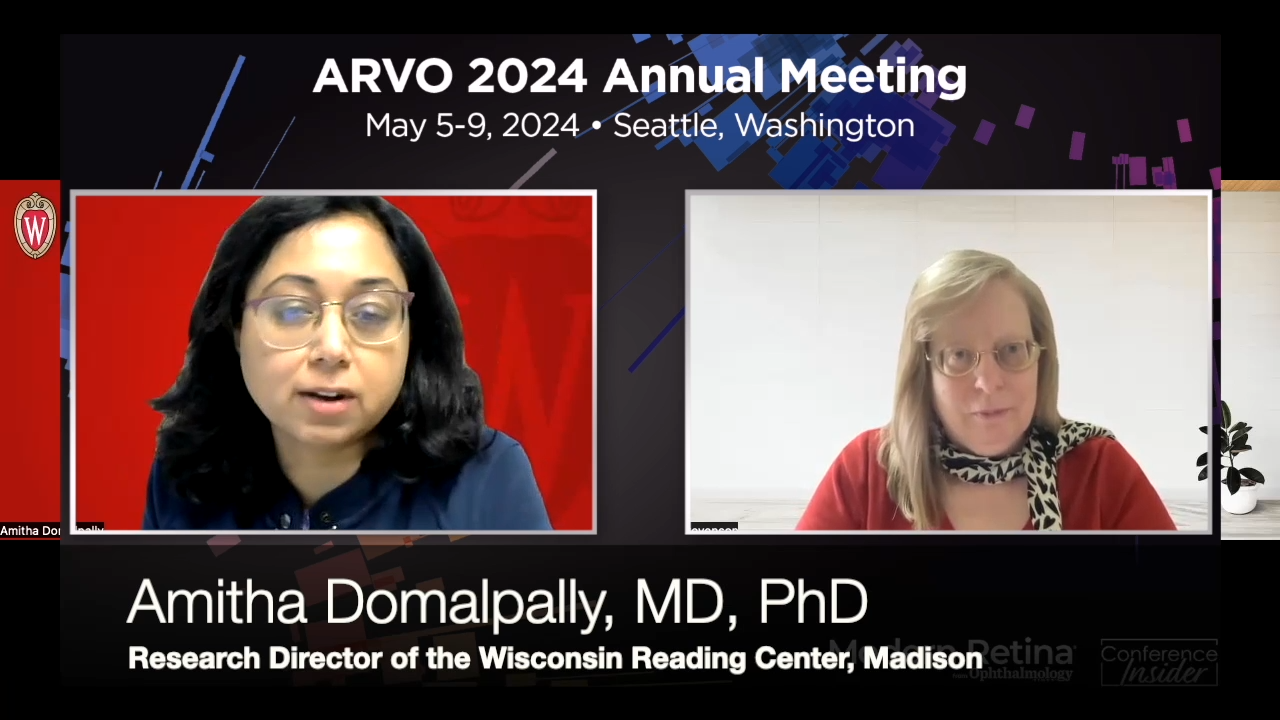Future of DME resting on new mechanisms of action
When it comes to finding new treatments for diabetic macular edema (DME), there is no shortage of promising targets, said Peter A. Campochiaro, MD. He presented an overview of future compounds with various mechanisms of action that may change how clinicians treat DME.
When it comes to finding new treatments for diabetic macular edema (DME), there is no shortage of promising targets, said Peter A. Campochiaro, MD.
Dr. Campochiaro, director of the Retinal Cell and Molecular Laboratory and professor of ophthalmology, Wilmer Eye Institute/Johns Hopkins University, Baltimore, presented an overview of future compounds with various mechanisms of action that may change how clinicians treat DME.
VEGFs
Vascular endothelial growth factor (VEGF) “is going to remain an important target,” Dr. Campochiaro said, including abicipar pegol, which may have a longer duration of action than aflibercept. Single-chain, anti-VEGF antibody fragments also are being developed, and these show promise because a large amount can be injected.
“Therefore the inhibitory levels can be maintained longer in the vitreous,” he added. However, Dr. Campochiaro cautioned that these may also have a greater systemic exposure.
There are also a number of modes of sustained delivery systems being tested. For example, Genentech’s ranibizumab port delivery system (RPDS) is a refillable reservoir that may reduce treatment burden. Dr. Campochiaro said the RPDS has shown positive outcomes in an age-related macular degeneration study that could potentially be replicated in DME.
Microparticles
Microparticles are drugs that are incorporated into polymers and then formulated into small particles that can be injected through a syringe and needle into the eye, but then deliver drug over a sustained period of time. Graybug’s sunitinib is a tyrosine kinase inhibitor that blocks VEGFs, PDGFRs, c-MET, and DLK.
“So far, it looks like when these are injected into the vitreous, they form an aggregate that stays in the inferior vitreous base,” Dr. Campochiaro said. “Then (they) slowly erode to release this sunitinib for more than 6 months.”
Gene transfer
Gene transfer
Gene transfer is a technique in which a piece of DNA, which consists of a promoter and a gene of interest, is incorporated into a cell. That cell then becomes a factory to produce that protein, Dr. Campochiaro said.
The Lentiviral Vector Gene Transfer of Endostatin/Angiostatin for Macular Degeneration (GEM) Study, which was published in Human Gene Therapy in 2016, is evaluating a lengthy viral vector that was used to deliver by subretinal injection a construct that expresses endostatin and angiostatin.
“This was done in neovascular, age-related macular degeneration (AMD), and we were able to measure the amount of endostatin and angiostatin that were produced in the eye,” Dr. Campochiaro explained. “(However, endostatin and angiostatin) weren’t as effective as we would have hoped in terms of eliminating fluid and stopping choroidal neovascularization. But we know if we can produce a VEGF-binding protein that it would be effective.”
Sanofi Genzyme’s AAV2.sFLT01 is a vector that expresses a modified soluble Flt1 receptor designed to neutralize the proangiogenic activities of VEGF in the treatment of AMD. To date, the product has shown lasting anti-VEGF effects in neovascular AMD.
“It binds up VEGF just like ranibizumab or aflibercept does, but only needs one injection in the vitreous cavity and then it’s produced in the eye,” he added.
The highest dose in that study had the greatest impact, and several patients had a good response with fluid elimination and stability. The key here will be patient selection, as patients with pre-existing antibodies to AAV2 were unable to express the protein.
“We want-with one shot-to be able to produce the protein over the long term,” Dr. Campochiaro said. Although the expression went up and peaked, then started to decline between weeks 26 and 52, it may be possible to try higher doses.
Tie2 and Ang2
Tie2 is a small molecule responsible for endothelial cell stabilization. Angiopoietin-1 causes Tie2 activation and that, in turn, causes vascular endothelial-protein tyrosine phosphatase (VE-PTP) to allow vessels to be more responsive to VEGF.
“The way to use Tie2 for therapy is to find ways to keep it activated,” Dr. Campochiaro said.
Aerpio Therapeutics’ AKB-9778, a first-in-class Tie2 activator, has shown when dosed at 15 mg BID subcutaneously, both alone and in combination with ranibizumab, can improve the underlying retinopathy over a 3-month period and had a greater effect than ranibizumab alone.
Angiopoietin-2 (Ang2) is expressed in growing blood vessels and promotes angiogenesis and tumor growth by destabilizing blood vessels. Hoffmann-La Roche’s RO6867461 is a bispecfic antibody that blocks both VEGF and Ang2, while Regeneron’s REGN910-3 is an antibody directed solely against Ang2.
Luminate
Luminate
Allegro Ophthalmics’ Luminate is a first-in-class integrin peptide therapy that treats vitreoretinal diseases by targeting integrin receptors involved in cell signaling and regulation and in the construction of new and aberrant blood vessels.
“(In DME,) we didn’t see a huge reduction in edema for the first 3 months, but over the subsequent 3 months without treatment the edema continued to reduce,” Dr. Campochiaro said, indicating it may offer gradual but sustainable outcomes.
Interpreting the outcomes
Although these and other compounds are in varying stages of development, “VEGF will remain a mainstay of treatment for DME,” Dr. Campochiaro said, but with “a shift to sustained suppression.” Only time will tell whether other avenues will prove as efficacious (or more so) as the VEGFs have been.
This article was adapted from Dr. Campochiaro’s presentation at 2016 Retina Subspecialty Day of the annual meeting of the American Academy of Ophthalmology.
Dr. Campochiaro is a consultant or receives grants from Abbvie, Aerpio Therapeutics, Alimera Sciences, Allegro Ophthalmics, Allergan, Applied Genetic Technologies, AsclipiX, Genentech, Sanofi Genzyme, GlaxoSmithKline, Intrexon, Oxford BioMedica, Regeneron Pharmaceuticals, RegenX Bio, Roche, and Rxi. He is an equity owner or holds patents with GrayBug.




.png&w=3840&q=75)







